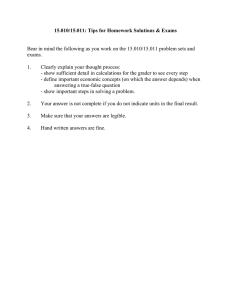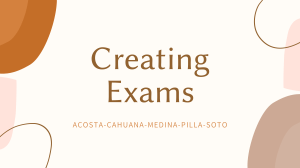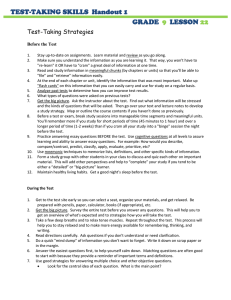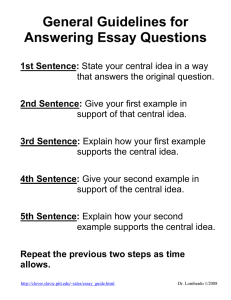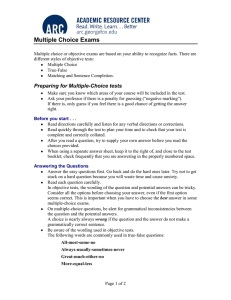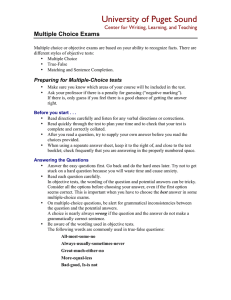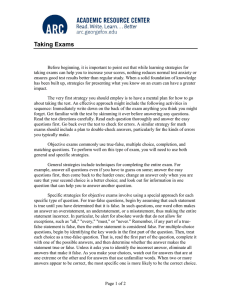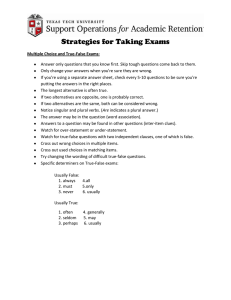TEST TAKING
advertisement
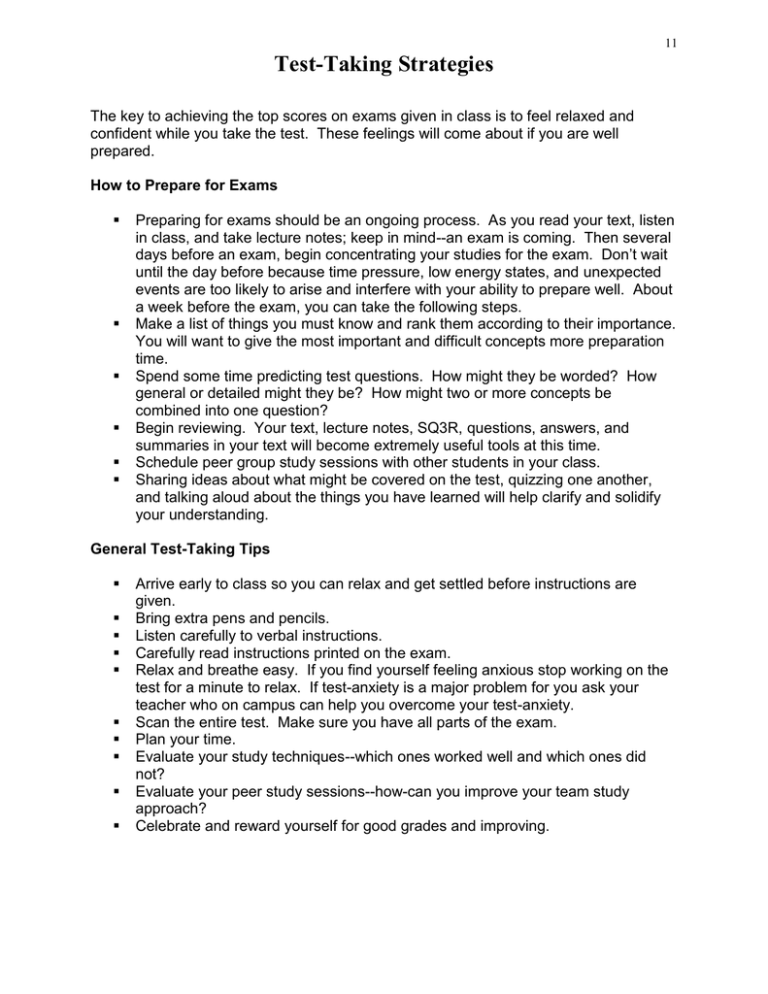
11 Test-Taking Strategies The key to achieving the top scores on exams given in class is to feel relaxed and confident while you take the test. These feelings will come about if you are well prepared. How to Prepare for Exams Preparing for exams should be an ongoing process. As you read your text, listen in class, and take lecture notes; keep in mind--an exam is coming. Then several days before an exam, begin concentrating your studies for the exam. Don’t wait until the day before because time pressure, low energy states, and unexpected events are too likely to arise and interfere with your ability to prepare well. About a week before the exam, you can take the following steps. Make a list of things you must know and rank them according to their importance. You will want to give the most important and difficult concepts more preparation time. Spend some time predicting test questions. How might they be worded? How general or detailed might they be? How might two or more concepts be combined into one question? Begin reviewing. Your text, lecture notes, SQ3R, questions, answers, and summaries in your text will become extremely useful tools at this time. Schedule peer group study sessions with other students in your class. Sharing ideas about what might be covered on the test, quizzing one another, and talking aloud about the things you have learned will help clarify and solidify your understanding. General Test-Taking Tips Arrive early to class so you can relax and get settled before instructions are given. Bring extra pens and pencils. Listen carefully to verbal instructions. Carefully read instructions printed on the exam. Relax and breathe easy. If you find yourself feeling anxious stop working on the test for a minute to relax. If test-anxiety is a major problem for you ask your teacher who on campus can help you overcome your test-anxiety. Scan the entire test. Make sure you have all parts of the exam. Plan your time. Evaluate your study techniques--which ones worked well and which ones did not? Evaluate your peer study sessions--how-can you improve your team study approach? Celebrate and reward yourself for good grades and improving. 12 Test-Taking Strategies Answering Essay Test Questions Essay test questions require that you know the material well enough to recall from memory, in an organized way, both major and minor points that will provide an answer. Often they require that you make use of creative and critical thinking. The questions may ask you to leap beyond information as it was presented in the text or in class or they may ask you to offer your own ideas and opinions. The SQ3R will help you prepare for these types of questions. When presented with an essay test, keep these steps in mind. Essay tests often begin with words such as analyze, compare, contrast, criticize, describe, discuss, evaluate, illustrate, apply, interpret, prove, or summarize. Know what these words mean. Before you begin to answer any test questions, read all of the questions and make some speedy notes about the major and minor points you will want to cover when answering them. You may want to do this in the form of a quick outline. Estimate how much time you can spend answering each question and try to stick to your schedule. You will want to allow more time for difficult questions and questions that carry more points toward the scoring of the test. Answer easier questions first. Answer each question as directly as possible and avoid wandering and writing too much or too little. Leave a few blank lines between answers so you can go back and add ideas if time allows. Answering Objective Test Questions Objective test questions include multiple-choice, true-false, and matching questions. These questions require that you recognize and discriminate among correct and incorrect answers. When taking an objective test keep the following in mind. Read each question carefully and completely; do not jump to conclusions and assume you have the correct answer until you have read and considered the entire question. Treat each alternative in a multiple-choice test question as a true-false statement. Eliminate alternatives that are definitely false, and if more than one answer seems to be true, choose the one that most thoroughly and directly answers the question. Do not spend too much time on any one question. If you are unsure of an answer, put a check mark in the margin next to the question and go back to it later if you have time. The rule of thumb about changing answers is to stick with your original answer unless you have strong second thoughts about it. If you feel reasonably sure that your second thoughts are correct, then go ahead and change the answer.
